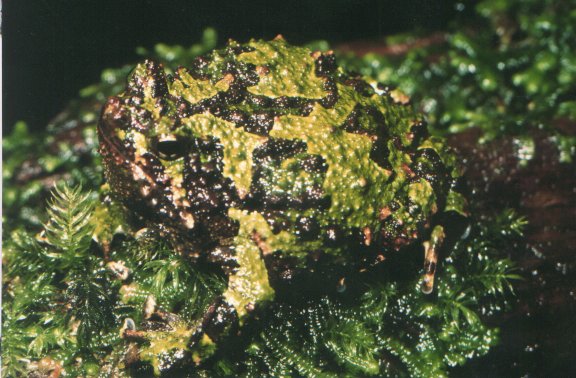Facts About Marbled Rain Frog
Scaphiophryne marmorata, known as the green burrowing frog or marbled rain frog, is a remarkable species indigenous to Madagascar. Sadly, it is currently classified as "Vulnerable" by the IUCN due to habitat destruction. In 2003, researchers reclassified the Scaphiophryne marmorata complex, designating Scaphiophryne spinosa as a distinct species and identifying a new one, Scaphiophryne boribory.
Female green burrowing frogs can reach up to 40 millimeters in length, while males are slightly smaller, measuring around 30 millimeters. They possess a nearly round body, a small head, a short snout, prominent eyes, and robust limbs. Their skin is predominantly smooth but marked with thorny tubercles on the upper back. They have elongated digits with expanded discs at the tips and bony flanges on their hind limbs for digging. Their coloration varies from bright green with darker patches to olive in the western regions of their habitat, and they feature a marbled white underside.
These frogs dwell in the rainforests of eastern Madagascar as well as the drier western parts of the island, thriving at elevations up to 1,000 meters above sea level. Typically, they burrow themselves in leaf litter on the forest floor but will climb into bushes and trees to catch insects. They engage in explosive breeding at the onset of the rainy season, utilizing temporary pools to lay their eggs. The tadpoles rapidly develop to ensure their survival before the pools evaporate.
The green burrowing frog faces considerable threats from habitat destruction and declining populations, exacerbated by the pet trade. However, conservation efforts are ongoing, including the exploration of captive breeding programs to alleviate pressure on wild populations. The frog is also protected in several national parks across Madagascar, providing a beacon of hope for its continued survival.
